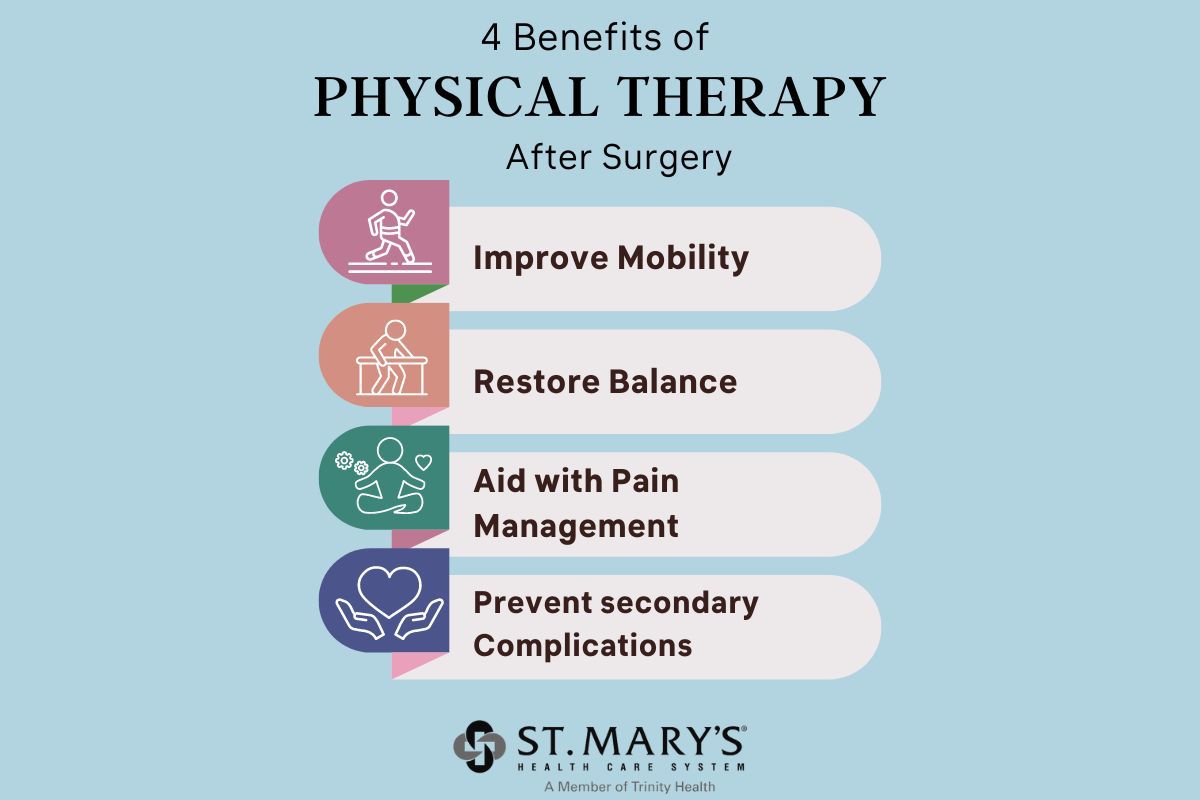The Role of Physical Therapy After Surgery
July 31, 2023A key component to regaining strength and mobility after surgery is physical therapy. While surgery aims to address health issues, some sort of physical therapy may be required in your journey toward optimal recovery. Strengthening your muscles and improving your range of motion not only helps in recovery but also can reduce pain and prevent future injuries to the same area. Keep reading to understand why physical therapy after surgery is crucial, according to Tim Sorrells, physical therapist and director of St. Mary’s Rehabilitation Services.
Improving and Restoring Mobility and Balance
Surgery often causes temporary mobility limitations to the impacted region. When you experience this type of trauma, your body’s natural response is to protect itself. This can cause muscle and tissue tightness, swelling, and limited range of motion. Physical therapy is important for restoring function. Physical therapists can help patients regain their mobility and balance by practicing interventions such as exercise, stretches, heat and cold therapy, light therapy and more. Exercises that strengthen core, back, and pelvic muscles increase stability and improve balance. Exercises may also target muscles in specific areas, such as those that support the knee, hip, or shoulder. These exercises can be used in recovering from surgeries like knee or hip replacement or rotator cuff repairs.
Pain Management
While tightness and swelling are a natural reaction to injury, they can lead to a great deal of pain. Post-surgical pain is caused not only by damage to nerves caused by the surgery itself but also by inflammation compressing nerves in your body. Physical therapy helps to reduce the swelling and improve post-surgical pain. A physical therapist will work closely with a patient to determine which interventions will provide the most benefit to address the underlying causes of pain.
Prevents Secondary Complications
Secondary issues to surgery can include infection, blood clots, and other complications. Physical therapy can help reduce these issues using tailored exercises to decrease the risk of infection, contractures, and blood clots. Also, inactivity after surgery can decrease cardiovascular fitness, cause respiratory issues, and a general decline in physical health. Staying active with physical therapy interventions can counteract the complications and enhance overall well-being.
Depending on your surgery, your physical therapist will provide a tailored plan to help you reach your full potential. Be sure to stick to the plan, keep your PT appointments, and do your home exercises and stretches as prescribed to ensure that you can regain your strength and return to living the life you love.
St. Mary’s offers physical therapy care at multiple locations across Northeast Georgia, including:
- St. Mary’s Outpatient Center, 2470 Daniells Bridge Road, Bldg. 300, Athens
- St. Mary’s Sacred Heart Hospital, 367 Clear Creek Parkway, Lavonia
- St. Mary’s Good Samaritan Hospital, 5401 Lake Oconee Parkway, Greensboro
- St. Mary’s Home Health Care/Hospice Services, available to home-bound patients in 14 area counties
- Georgia Neurological Surgery & Comprehensive Spine, available to patients receiving care from GNS surgeons
A physician’s order is needed for care.

